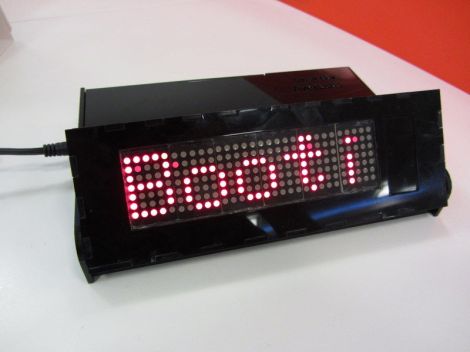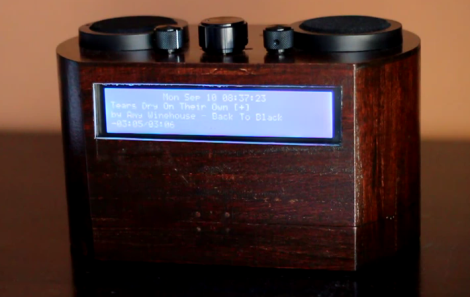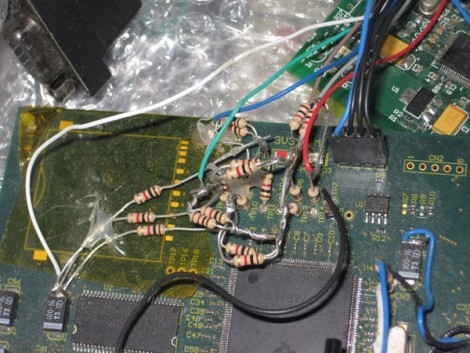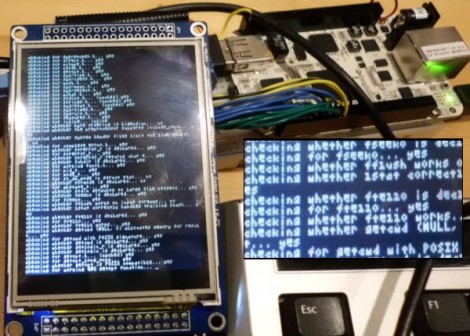
[Mahmut] calls this project SmartBox. It’s a BeagleBone controlled LED marquee which can pull down information off of the Internet.
The project started with the display itself. [Mahmut] used six 5×7 LED modules to populate a circuit board he produced himself. The low side of the modules is controlled by some MBI5026 constant current drivers, with PNP transistors on the high side. The display connects to the BeagleBone ARM board using a couple of IDC ribbon cable connectors. With that up and running he started working on the enclosure. The display board was modeled in Google SketchUp to ensure that the case design would fit it properly. The laser cut acrylic case is in two parts, the base holds the driver electronics, with a hinged section for adjusting the angle of the marquee.
So far there are a few different connectivity features which are shown off in the clip after the break. The BeagleBone has the ability to pull down Twitter feeds, notify about incoming email, and scroll messages.
Continue reading “BeagleBone Powers This Networked LED Marquee”
















